Merging. Even the best and most knowledgeable drivers can dread this maneuver- especially during heavy traffic. A lack of awareness about proper merging procedures causes confusion and heavier traffic. Fear not. In this post, we will explain the safest, fastest and most effective way to merge onto the freeway.
Signs and Signals
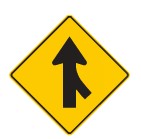
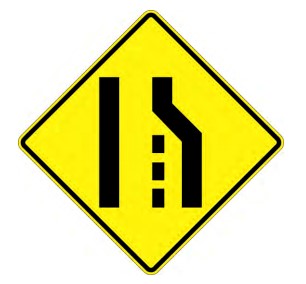 These two warning signs indicate that merging maneuvers to the left are required. You may see them used in conjunction or you may seem them on their own. In either case, they mean: MERGE.
These two warning signs indicate that merging maneuvers to the left are required. You may see them used in conjunction or you may seem them on their own. In either case, they mean: MERGE.
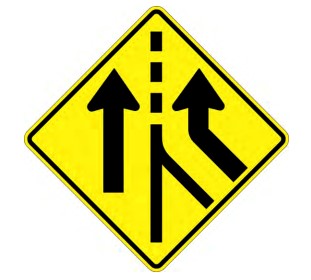 This sign on the other hand is called a “converge” and indicates that merging maneuvers are not required. Drivers joining the roadway from the right will have their own lane and therefore blending maneuvers are not necessary.
This sign on the other hand is called a “converge” and indicates that merging maneuvers are not required. Drivers joining the roadway from the right will have their own lane and therefore blending maneuvers are not necessary.
Some freeway entrances are equipped with ramp meters that control the timing and flow of traffic entering. The ramp meter restricts the number of vehicles that may proceed along the entrance ramp to prevent congestion at the eventual merge point.
Merging Basics (Low to Moderate Traffic)
There are a few things to remember when conducting a merge. On a roadway with low to moderate traffic levels most drivers are able to complete merging maneuvers with little problem.
The procedure is as follows:
- Use the full acceleration lane to match the speed of traffic already on the roadway you are about to join
- Check your mirrors to identify a safe gap in traffic for you to merge into
- Use your turn signal to notify other drivers of your intent to move over once your location had been determined
- Perform a shoulder check to ensure there is no one or nothing in your blind spot
- Merge into traffic in your intended gap
- Cancel signal
- Continue at posted speed limit
If you are driving in a lane with a merge lane approaching, help merging traffic by adjusting your speed or, if safe, lane change to the left over to allow merging traffic to join the roadway seamlessly.
In heavy traffic situations, cooperation and courtesy tend to take a back seat and most drivers appear to be out for themselves. Why? Mostly because people are unaware of what the proper and most effective procedure is!
Cue the Zipper Merge (Heavy Traffic)
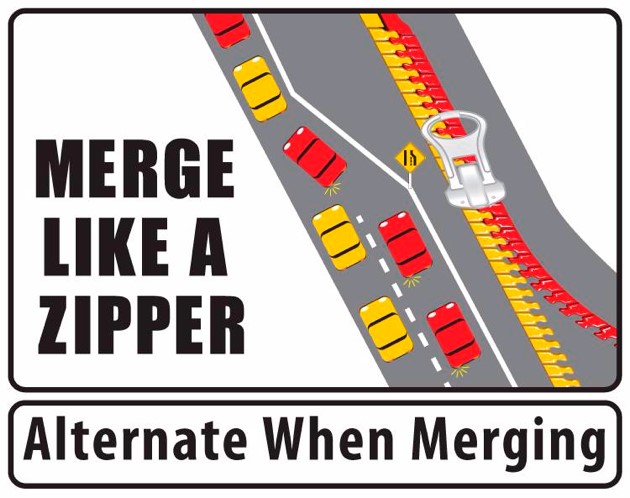 A zipper is perfect for explaining the most effective merging procedure. For a zipper to function properly, it requires each tooth to alternate turns, allowing both sides to seamlessly come together in harmony.
A zipper is perfect for explaining the most effective merging procedure. For a zipper to function properly, it requires each tooth to alternate turns, allowing both sides to seamlessly come together in harmony.
Translated for the road: vehicles already on the roadway take turns alternating their position with vehicles that are merging onto the roadway.
How it’s done:
- When faced with heavy traffic drivers must use the full acceleration lane.
- BLEND AT THE END. One for one. NO early merge, no pushing in when you see a little gap in traffic, wait for your turn at the end of the acceleration lane.
- This is the fastest most efficient way to keep traffic flowing – and who doesn’t want that?
Why this is important :
- Drivers who wait to blend at the end are not being rude or insensitve, they are utilizing the acceleration lane to its full potential and reducing traffic congestion behind them.
- Early mergers cause confusion for other drivers as to when and where to merge.
- Early mergers who attempt to blend in at different locations in the accelartion lane block the flow of traffic in the acceleration lane.
- Early mergers who do not use the full acceleration lane also block traffic behind them causing traffic jams on feeder routes aswell.
Other Scenarios:
- The zipper merge is also ideal when there is heavy traffic and a lane has been blocked or closed due to construction, an accident or for other reasons.
Troubleshooting:
- Should a potential conflict arise, it’s important to ensure we GIVE right of way instead of taking right of way.
- If a situation occurs where a driver is not participating in the zipper merge, take a deep breath and move in behind them
Besides being a genuine congestion reliever, the zipper method of merging is the fastest and most effective way to get traffic moving.
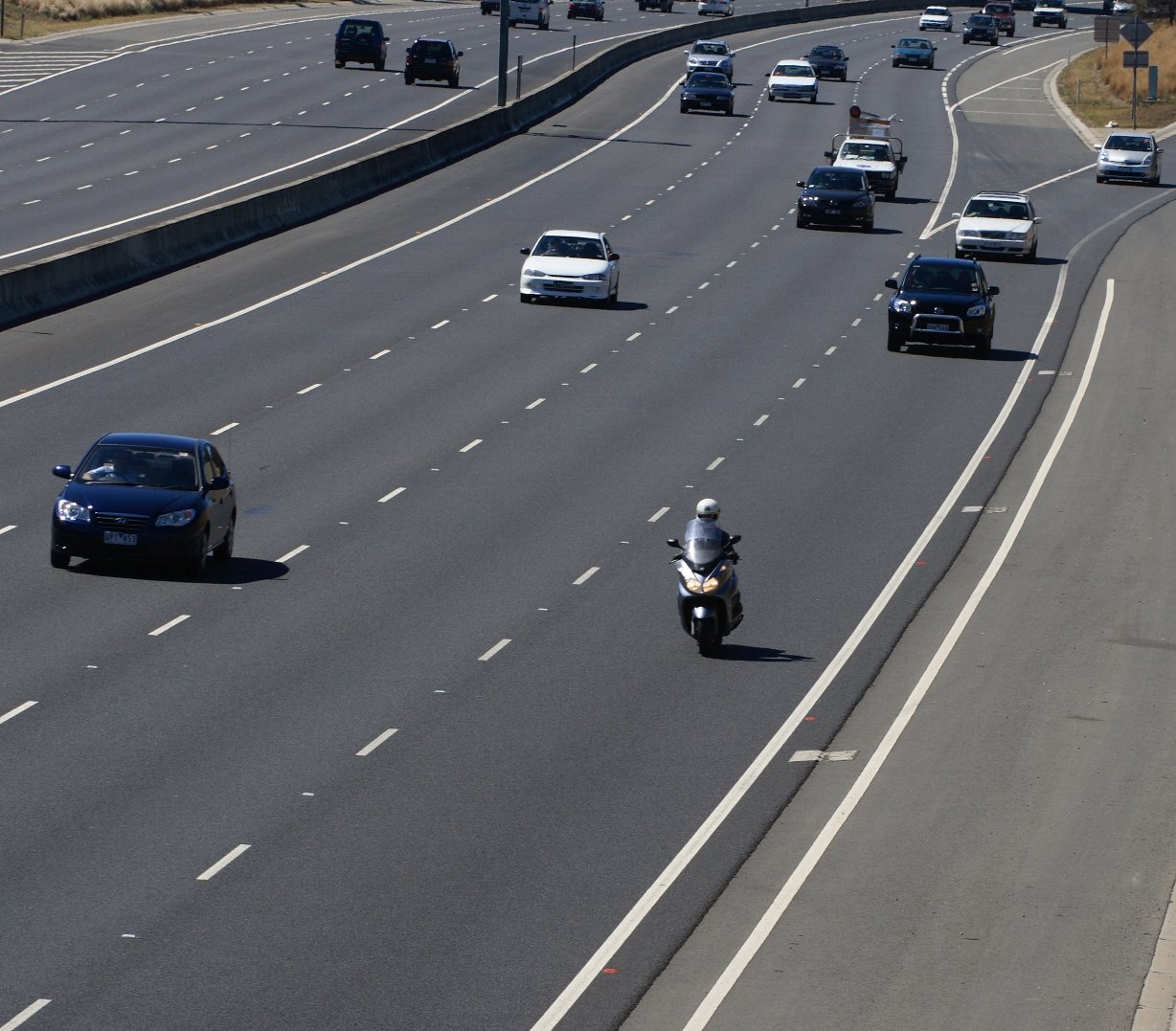
Merging is choreographed dance of sharing space, trading spaces, and finding your own space to confidently and safely exist while on a busy multi-lane highway or road. It takes a keen eye and lots of practice to master this critical highway skill, and is part of a safe, and constructive defensive driving background.
So. The way this works is to have everyone on the same page. Do your part, spread your knowledge on this issue, tag your early merger friends and family in this blog post and lets get BC road moving a bit quicker.
